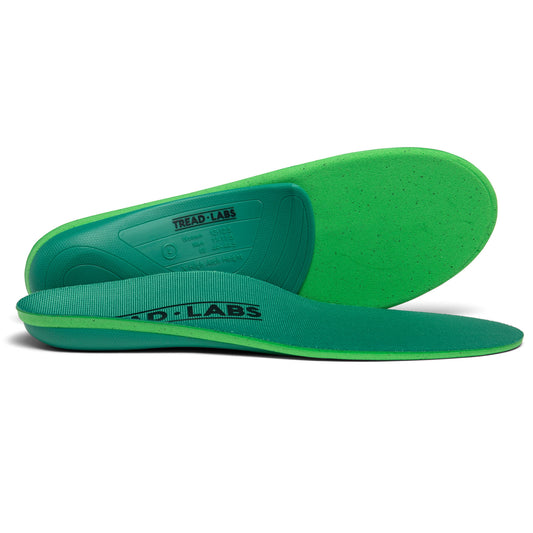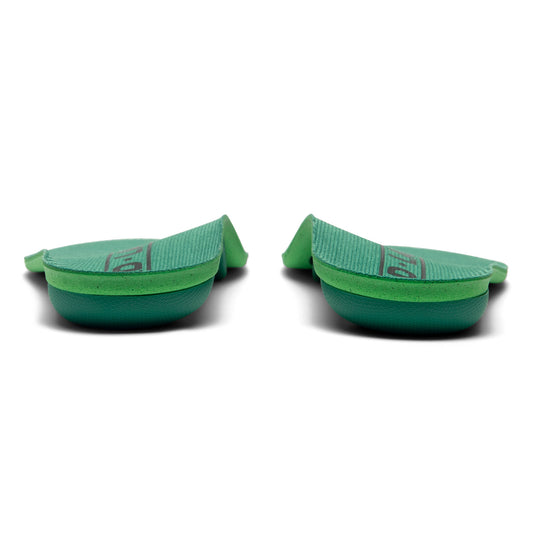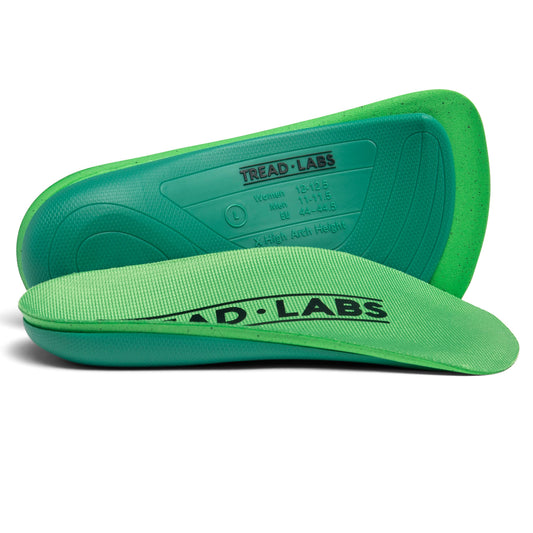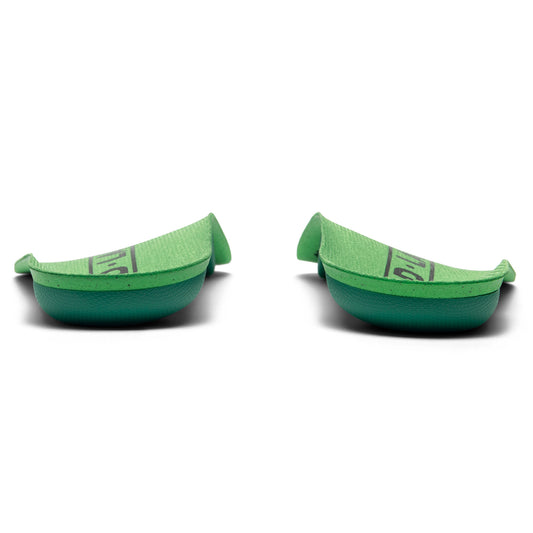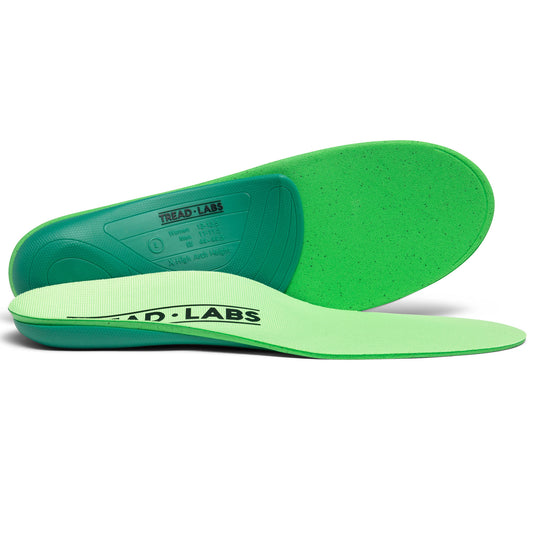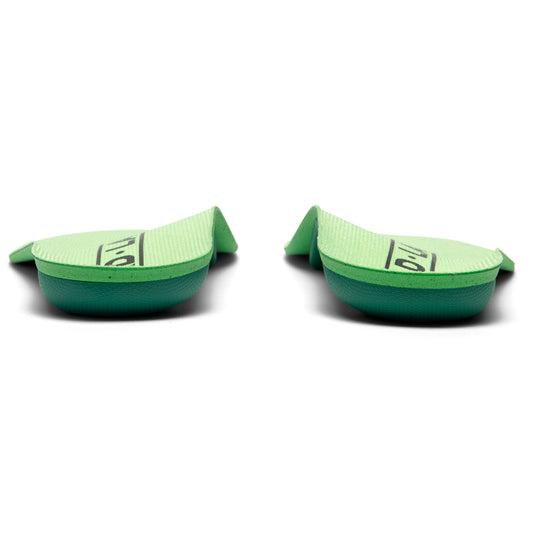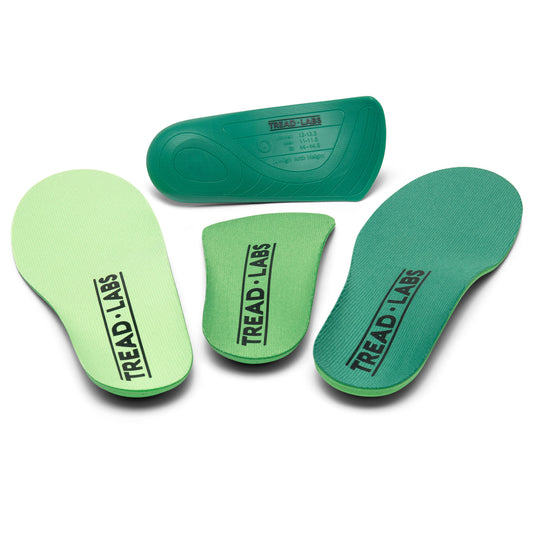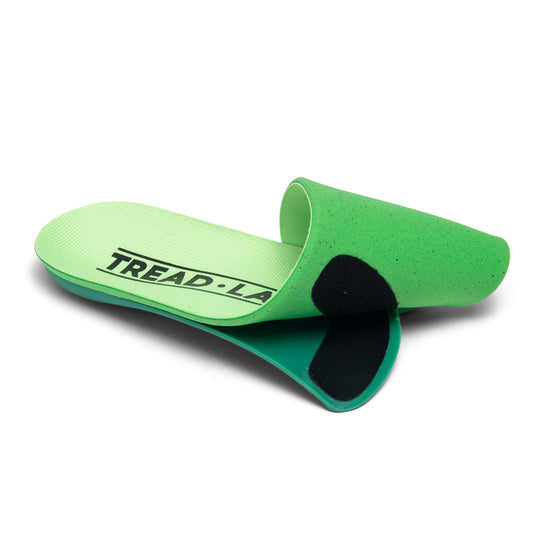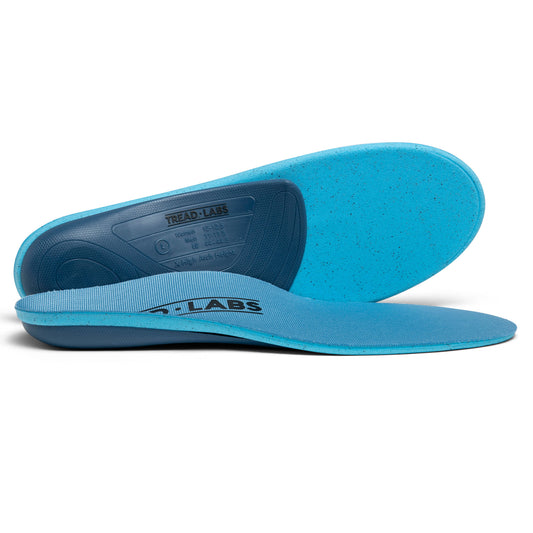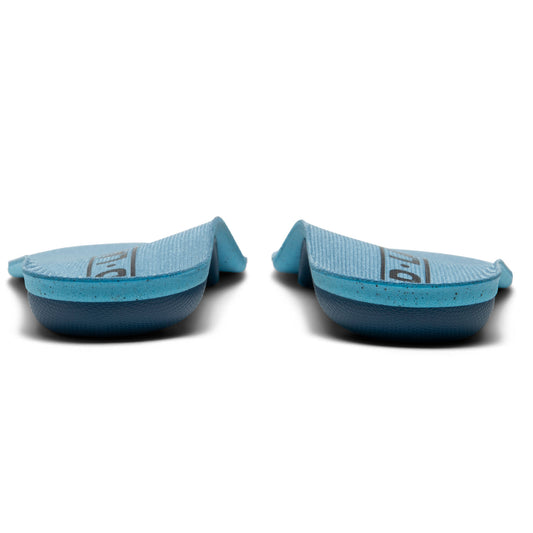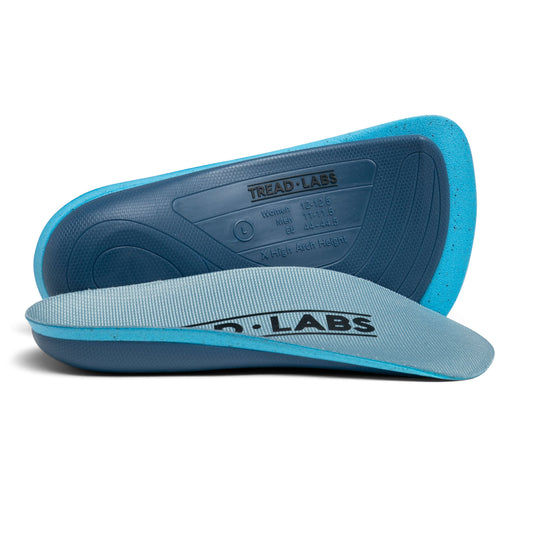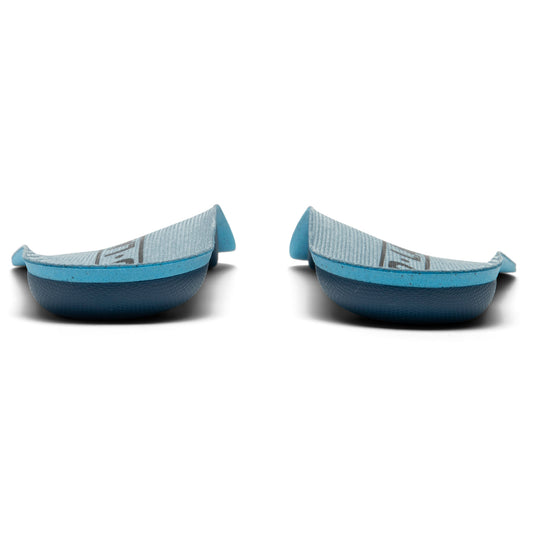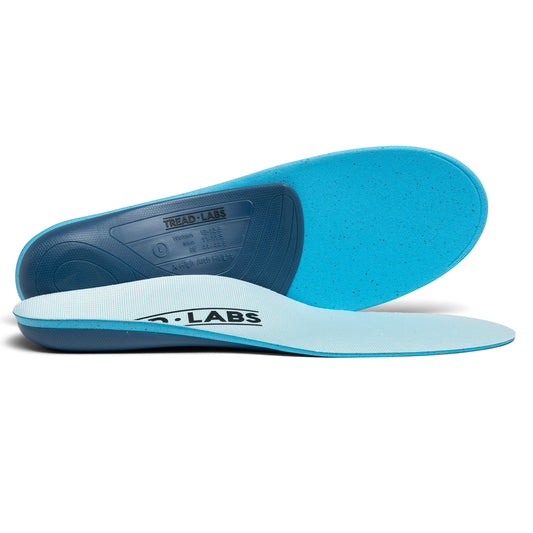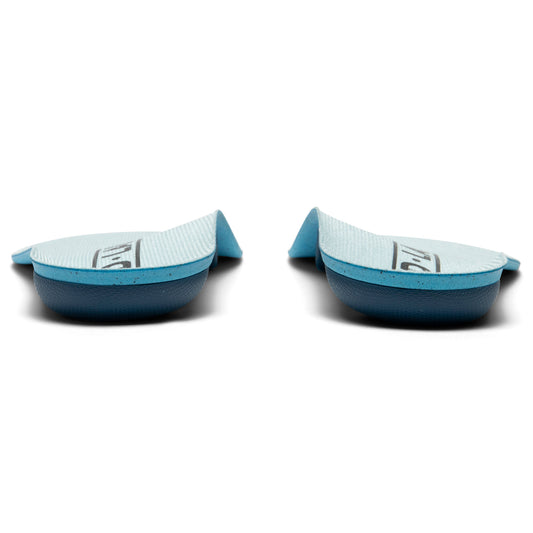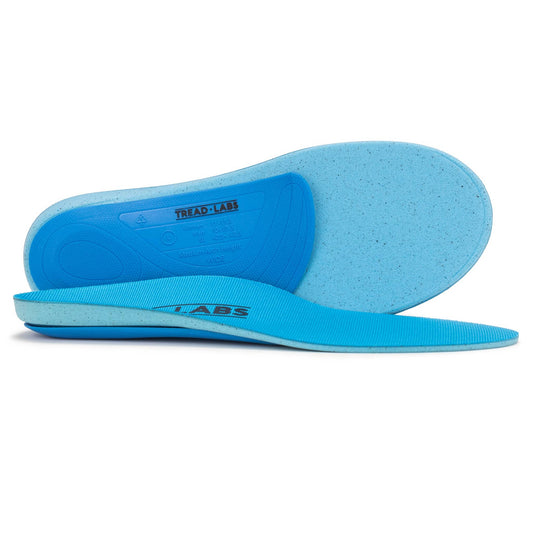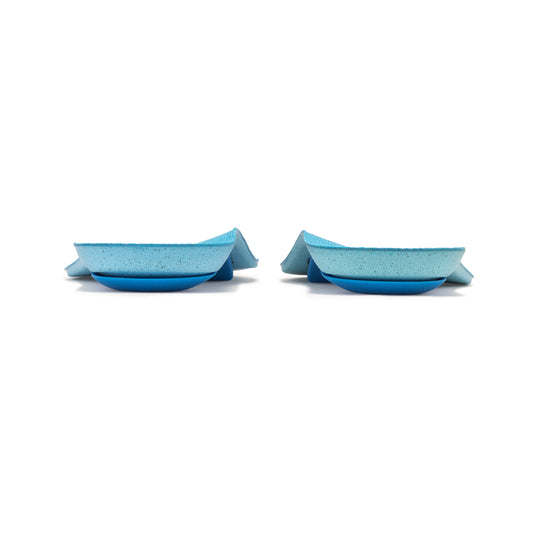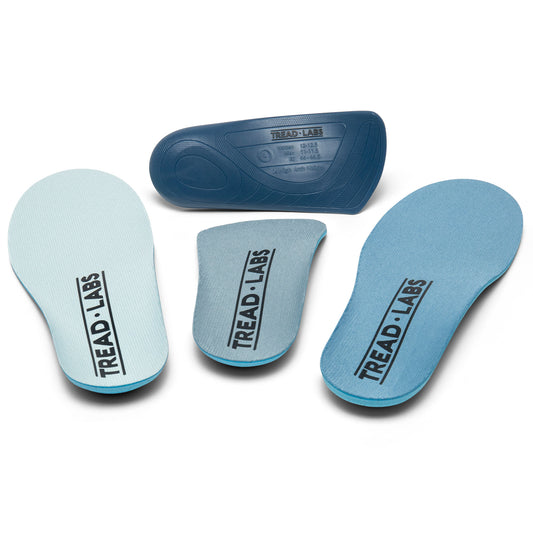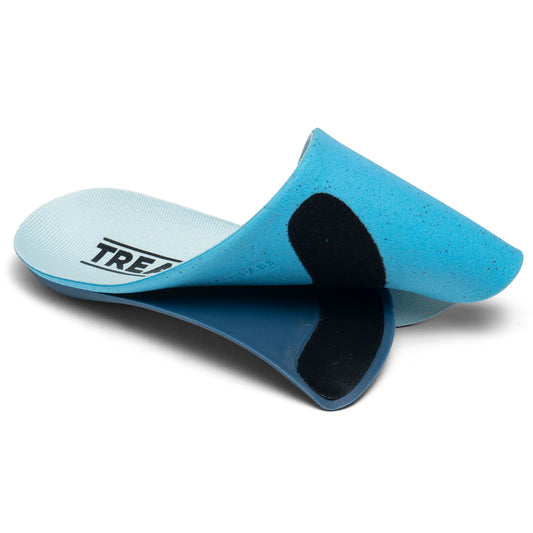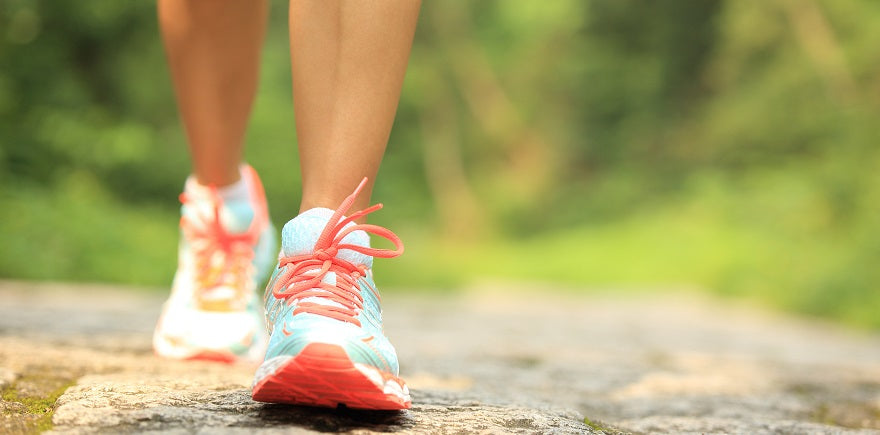
Finding The Best Insoles For Walking Or Standing All Day
Because walking is a lower-impact activity, many of us don't pay as much attention to the footwear we use when hitting the pavement. Picking the right footwear and adding the right amount of arch support is crucial to preventing injury and ensuring comfort.
Although walking is a lower risk activity for injuries (In comparison to high-impact sports like running or basketball) you should remember that walking still puts weight and some impact on your feet and legs. And, if you're walking all day without the right amount of support, you know how much wear and tear your body can feel.
The Basics ---
- Walking is a great low-impact activity that comes with many health benefits, but if you don't have the right footwear, you're at risk for injuries like plantar fasciitis, runner's knee and Achilles tendinitis.
- Walking shoes tend to have thinner soles and less cushioning than sport-specific shoes, so you'll need to add a comfort insole with the right amount of arch support if you want to rack up the miles.
- When you're shopping for new walking shoes, make sure they bend at the ball of the shoe, have the right curvature to conform to your walking movements, and that the width of the heel is low to the ground and not super wide.
- Tread Labs Ramble Insoles are perfect for comfortable walking support that keeps your feet energized mile after mile. For firmer support with less flex, go with Pace insoles.
What You Need To Know ---
In this post, we'll walk you through the benefits of walking, as well as common foot problems you'll want to avoid and tips for finding the best insoles for walking all day.
Walking is the Best Medicine
You've probably heard of the health benefits of walking. The American Academy of Podiatric Sports Medicine (AAPSM) argues that walking can drastically improve your health and well-being. Walking has been shown to reduce stress, increase cardiovascular health, and boost immunity. It's no wonder that the "Father of Western Medicine" Hippocrates stated that "walking is the best medicine."
Whether you're lacing up your walking shoes before work, racking up the miles when you're walking all day at work, or strolling in the evening with your dog, continued and consistent walking habits can do wonders for your life.
Do You Need Insoles For Walking Shoes?
Walking shoes tend to have thinner soles and less cushioning than other sports-specific shoes. While this may seem like an appropriate trait for lower-impact shoes, your feet still need the same level of arch support, cushion, and shock absorption when walking as when engaging in other activities. In fact, walking can cause many of the same injuries as running, including plantar fasciitis, runner's knee, and Achilles tendinitis.
As with most other footwear, the factory insoles in walking shoes are generic. They're made to the lowest common denominator of arch contour so that they'll fit the majority of people who need that type of shoe.
While walking may be lower impact, the weight you put on your feet and legs means you still need good arch support insoles for shoes to prevent injuries. The best insoles for walking all day will have strong arch supports that control for excessive pronation. But before you pick out insoles for walking shoes, you'll want to get the best shoe for your foot.
Walking Shoes Buying Tips
As with any type of footwear you buy, you need to choose a walking shoe that fits your specific foot structure. Knowing your feet before buying a pair of walking shoes will help you get a pair that is best suited for your feet.
Do you have lower arches and tend to overpronate? Your excessive inward rolling motion can lead to plantar fasciitis. What about extremely high arches and the tendency to supinate (or under pronate)? This means your arches don't have optimal shock-absorbing capacity when running or walking, which can lead to sore feet and knees.
Walking Shoe Fitting Tips
Once you've figured out your foot's shape, you'll want to take into account the specific motions inherent to walking. When we walk, our foot's natural motion is a gradual roll from the heel to the toe, with a bend at the ball of the foot during each step.
This two-part motion means your walking shoes need to have enough flexibility in the correct places. When you're shopping for your next pair of walking shoes, try these tests to see if the shoe you're looking at can properly accommodate this motion:
- Pick the shoe up and bend it at the ball of the shoe. A solid walking shoe should flex at the ball, and remain firm through the arch area. It should mimic the flex of your foot, bendable at the ball but not the arch.
- Put the shoe on a flat surface and push down on the toe. The heel should rise up off of the surface. This means the shoe has the necessary curvature and will conform to your walking movements.
- Check the width of the heel. It should be low to the ground and not super wide. This lower heel (also called "undercut") will ensure better landing and stability for the heel-striking motion common to walking.
Tips For Trying On New Walking Shoes
When you're trying on a pair of shoes you plan to do a lot of walking in, use these tips to make sure you're getting what you need to put on the miles in comfort:- Bring the socks you plan on wearing during walking.
- Make sure you take out the generic insoles that come inside the shoe and slip in your own insoles to ensure correct fit. Remember, the best insoles for walking will enhance the fit of your shoe.
- Try on your shoes at the end of the day, when your feet are slightly swollen. This will ensure that you don't buy shoes that are too small.
- Make sure the shoe has a wide toe box. You don't want cramped toes, blisters, or corns or calluses.
- There should be about 1/2 inch between your toes and the end of the shoe.
- Walk around on different surfaces. Shoes have varying levels of cushion and support. What feels good on carpet might not be the best choice for concrete.
The Best Insoles For Walking All Day
If you're going to be walking all day, the key to comfort and support is maintaining proper biomechanics. The best shoe insoles for walking will provide the necessary arch support, no matter your arch height.
From flat feet to high arches, your insoles need to provide structured support. Arch support ensures your feet are moving in optimal ways, preventing injury. When looking for the best shoe inserts for walking all day, you'll want ones that have:
- An arch height that mimics the contours of your foot. Don't settle for a generic, one-size-fits all insole that leaves your arches wanting more. The key to comfort is giving your arch the right amount of support.
- Firm support. While gel or cushy insoles might seem like the ticket for getting the relief you want, they'll actually leave you disappointed in the long-term. The key to comfort is firm arch support.
- A deep heel cup that concentrates your heel's natural cushioning qualities.
Whether your on your feet exploring or walking all day for work, the key to staying happy and healthy is comfort. The right shoes and the best shoe inserts for walking will make all the difference in your steps.
Questions? Drop us a line at hello@treadlabs.com. We're here to help.


